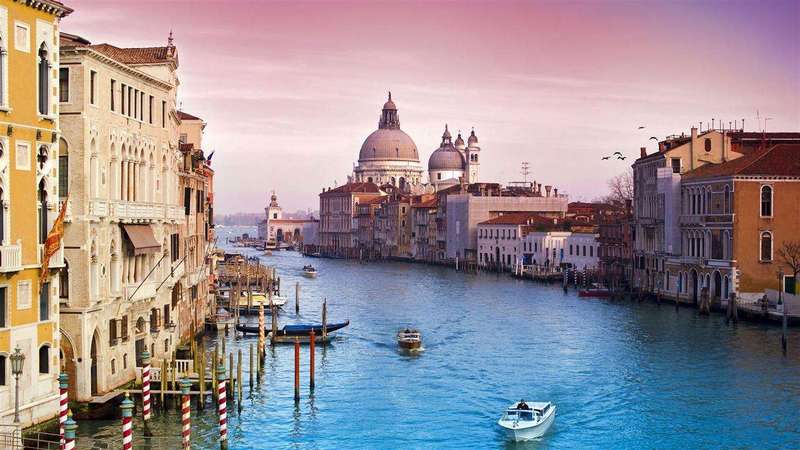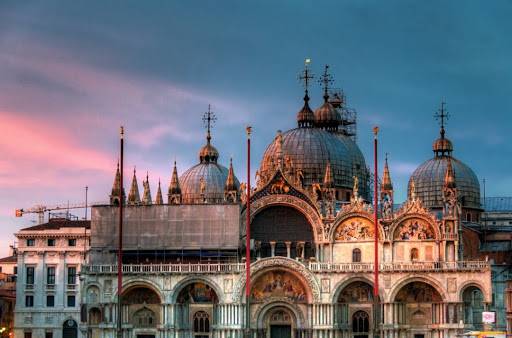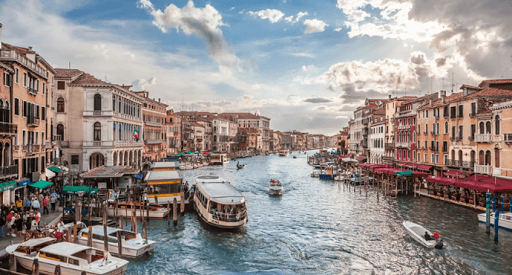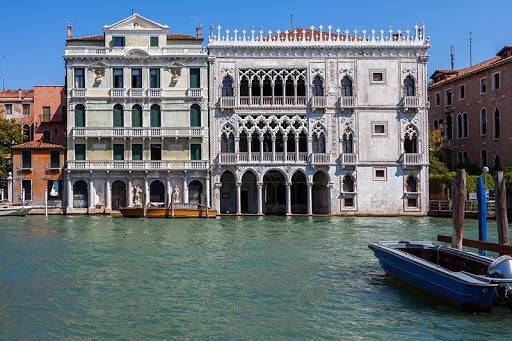Visiting St. Mark's Square allows tourists to quickly explore the square and its surrounding attractions, such as the Campanile, St. Mark's Basilica, and the Bridge of Sighs. Therefore, St. Mark's Square can be considered a must-visit spot in Venice; if you haven't been to St. Mark's Square, you haven't been to Venice. In fact, for many travelers with tight schedules, just visiting St. Mark's Square and its surroundings is enough for their Venice itinerary. St. Mark's Square is very large, providing tourists with ample space to photograph the towering Campanile and the St. Mark's Basilica behind it.
St. Mark's Campanile
In St. Mark's Square, you will see a towering bell tower. This bell tower, built of red bricks, stands 92.8 meters high, creating a strong contrast with the shorter St. Mark's Basilica next to it. In addition to photographing the bell tower itself, it is also highly recommended for visitors to climb to the top of the tower to overlook the panoramic view of Venice.
St. Mark's Basilica
St. Mark's Basilica was first built in the 9th century to house the relics of St. Mark brought back from Egypt. After several fires, the main structure was rebuilt in 1073, with other parts completed gradually in the 17th century. Photography is not allowed inside the church, so for photographers, the upper levels of the church are the place to showcase their skills. From the upper levels, you can overlook St. Mark's Square. This spot is slightly lower than the bell tower, allowing for a closer view of the tourists in the square. On the other side, facing the sea, there are two granite columns standing in a small square. Atop the western column stands St. Theodore, who was the patron saint of Venice before the relics of St. Mark were brought back. On the other side is the Lion of St. Mark, the guardian of Venice. According to Catholic tradition, the lion is the representative animal of St. Mark. The lion itself symbolizes the power of the Gospel of Mark and the majesty and dignity of Jesus as described in it. The wings represent spiritual elevation, and the halo on its head is a symbol of sanctity.
Walking from St. Mark's Square towards the sea, you will see a bridge crowded with people after a short left turn. When you stand on it and look in the direction of the gondolas, you will see a sealed limestone bridge, a 400-year-old structure—the Bridge of Sighs (Ponte dei Sospiri). Built in 1602, the Bridge of Sighs was designed by Italian architect Antoni Contino. This Baroque-style bridge connects the Doge's Palace (Palazzo Ducale) and the prison. Prisoners would be taken from the Doge's Palace to the death cells via this bridge after their trials. Facing the separation of life and death, they would let out a long sigh, hence the name Bridge of Sighs. The story of the Bridge of Sighs has become history, and its magnificent appearance perhaps deserves a romantic story. There is a popular legend that if couples kiss under the Bridge of Sighs while riding a gondola, they will be blessed with eternal love and a long-lasting relationship.
The Rialto Bridge was first built in 1181 AD and was originally called the Coin Bridge. The Coin Bridge connects the two banks of the Grand Canal in Venice, facilitating trade between the east and west banks of the canal. As trade between the east and west banks of the Grand Canal became more frequent, the Rialto Market on the east bank flourished, and the Coin Bridge was thus renamed the Rialto Bridge. The Rialto Bridge stands in the center of Venice, stretching across the Grand Canal, offering a stunning view of Venice. Close your eyes, and you might feel the charm of Venice from days gone by.
Gondola
Gondolas and gondoliers are one of the main subjects for photography in Venice. At this time, a camera with a telephoto lens is needed to capture clearer photos from a distance. Pay attention to the direction of the light source, and it is best to choose to shoot with the light.
Grand Canal
The Grand Canal is another major filming spot in Venice. There are houses with various architectural styles on both sides of the canal, differing in color, shape, and style. Various boats carrying tourists shuttle back and forth here. Just standing on any bridge, you can capture beautiful scenery.
Ca' d'Oro is the most outstanding Gothic building in Venice, formerly known as the 'Golden Palace'. Today, it has gradually become an art museum and is open to the general public. It houses precious paintings from the Venetian school from the 14th to the 18th century, representing the pinnacle of European painting art.



















